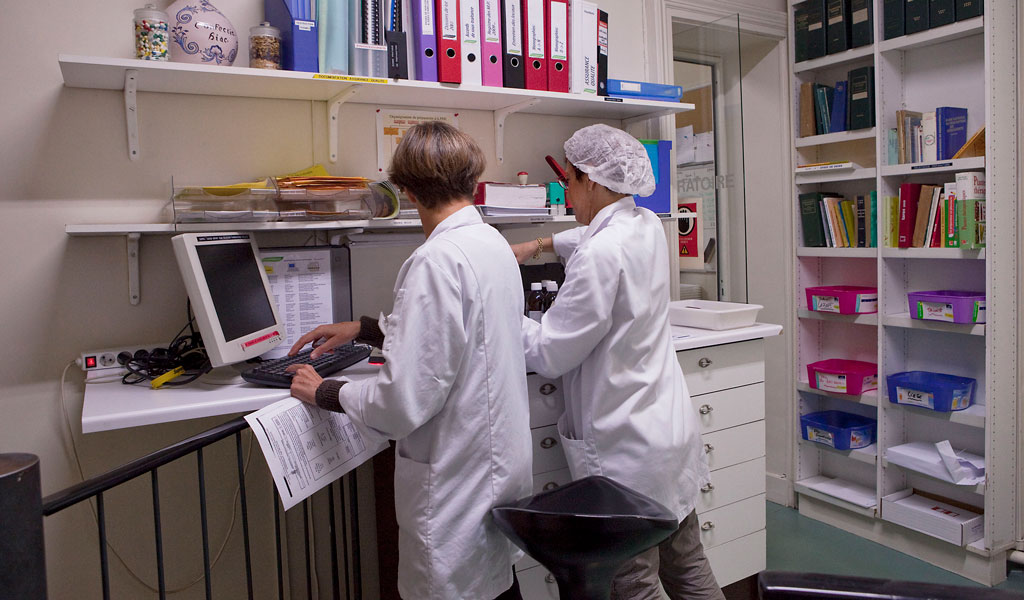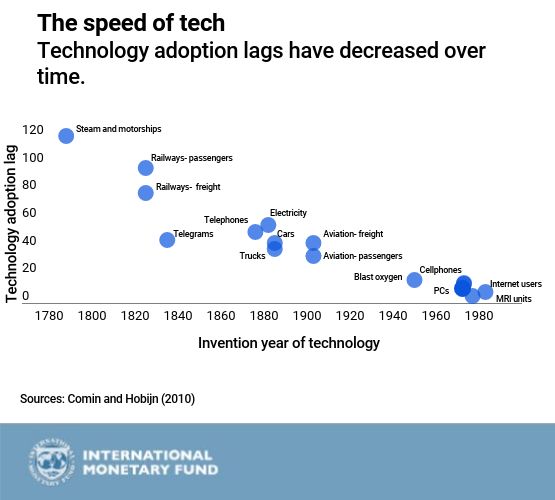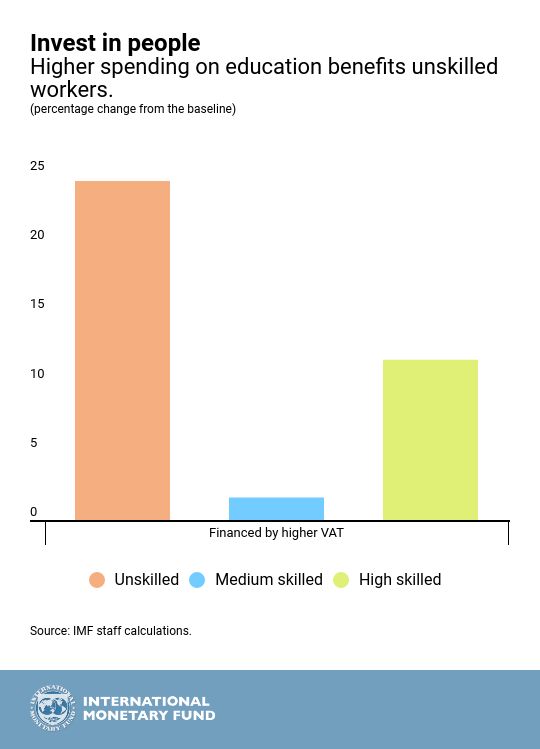Many feel anxious about the impact of new technology on their jobs. This is not new. In fact, it dates back at least to the Luddites movement at the outset of the Industrial Revolution. And it resurfaced during the Great Depression and again in the 1960s, following a period of high productivity growth, and in the 1980s at the outset of the IT revolution.
How can governments help? By investing in peoples’ skills.
A dramatic shift
In the past, technological advances have helped raise incomes for most. But we should not forget that the transitions involved—for workers, firms, sectors, and whole economies—have been difficult for many.
Many observers think the latest wave of technological innovation will be more disruptive than the ones in the past, especially for labor. They point to the timid growth of real wages and the falling labor share in national income in recent decades. New technological advances—in artificial intelligence, automation and robotics—might be even more dramatic. This is because of the presumed ease with which some technologies can substitute for a broad range of human skills.
Better by design
To begin, we need to understand the most recent wave of technology and its potential impact. Not all labor is replaceable, and artificial intelligence might transform jobs more than it will make them obsolete. And technological advances boost productivity, which over time creates new jobs, allows incomes and living standards to rise. In fact, our research indicates that the current slow wage dynamics is related to low productivity growth. But countries need policies to harness the benefits of technological change, and to address its less-welcome repercussions on wages and inequality.
So, what should countries do?
First, countries need policies to facilitate labor reallocation and shorten periods during which labor remains idle. For example, re-allocating labor could be easier with a stronger, while temporary, unemployment insurance. And social benefits may need to be more portable. Denmark has strong labor market institutions which combine flexible hiring and firing rules with extensive active labor market policies and relatively generous safety nets. The system is generally successful in matching labor supply and demand, and unemployment is low by international comparison.
But this, by itself, may not help those who are less prepared to benefit from change. People need policies that provide them with opportunities. Building human capital is key. This could mean more or more effective public spending on education, making it responsive to market demands and providing opportunities for life-long learning. For example, Singapore offers unconditional grants to all adults for training throughout their working lives.
Redistribution through the tax-benefit system could be another way to spread the gains from technological advances. Some economies have used available fiscal space for redistribution to spread the gains from technological change more equitably. For example, Canada cut the tax rate for middle income earners to strengthen the middle class, and more recently, made income tax benefits more generous, including by expanding eligibility. While redistribution is part of each countries’ social contract, IMF research indicates that addressing inequality may be beneficial for growth, and therefore important for a country’s economy.
Redistribution, however, comes at the cost of efficiency. That said, if governments design policies in the right way, all income groups can still gain.
So what is our bottom line? Technological advances present incredible economic and social opportunities. But they need to be supported by the right policies to ensure that they bring benefits to all.
This blog is based on the G-20 note on Technology and The Future of Work led by Helge Berger, Romain Duval, and Wojciech Maliszewski.
To see the authors presentation, click on video above or click here.








